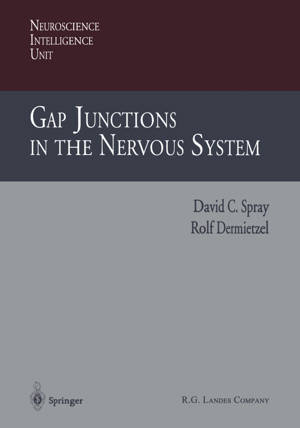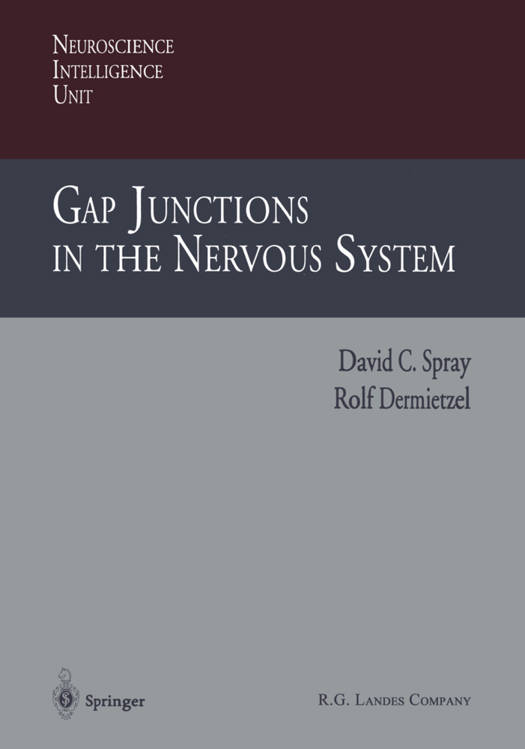
- Afhalen na 1 uur in een winkel met voorraad
- Gratis thuislevering in België vanaf € 30
- Ruim aanbod met 7 miljoen producten
- Afhalen na 1 uur in een winkel met voorraad
- Gratis thuislevering in België vanaf € 30
- Ruim aanbod met 7 miljoen producten
Zoeken
Gap Junctions in the Nervous System
€ 105,45
+ 210 punten
Omschrijving
A Cytoplasm Connexon or Hemichannel Cytoplasm external loop I - P. M. N-Termlnus Fig. 1. 1. Topology of gap junction channels. (A) Cap junction channels, extending from the cytoplasm of one cell to the cytoplasm of another, are formed by two connexons or hemichannels connected across extracellular space. (B) Each connexon is formed from six connexin subunits, each having four membrane-spanning domains and both amino and carboxyl termini within the cytoplasm. External/oops (I and II} are believed to provide the high affinity interactions between the hemichannels. 4 Gap }unctions in the Nervous System P-region of voltage sensitive nonjunctional molecules; these contributed disulfide 9 channels. And Delmar's group has ob- bridges are presumably involved in intra- tained evidence that intracellular acidifi- connexin and inter-EL loop tertiary struc- cation may result in a conformational ture. An old observation that should be change analogous to the ball and chain repeated stoichiometrically with modern techniques is that gap junction channels model of inactivation of voltage gated ionic can be split into connexons or hemi- channels, whereby the carboxyl terminal channels using hyperosmotic disaccharide portion of connexin43 binds to CL, closing 23 solutions again implying that linkage is the channel. Higher order structure of the channel not covalent. is believed to consist of six connexins form- ing the hemichannel or connexon in a 3.
Specificaties
Betrokkenen
- Uitgeverij:
Inhoud
- Aantal bladzijden:
- 317
- Taal:
- Engels
- Reeks:
Eigenschappen
- Productcode (EAN):
- 9783662219379
- Verschijningsdatum:
- 13/11/2013
- Uitvoering:
- Paperback
- Formaat:
- Trade paperback (VS)
- Afmetingen:
- 178 mm x 254 mm
- Gewicht:
- 585 g

Alleen bij Standaard Boekhandel
+ 210 punten op je klantenkaart van Standaard Boekhandel
Beoordelingen
We publiceren alleen reviews die voldoen aan de voorwaarden voor reviews. Bekijk onze voorwaarden voor reviews.










